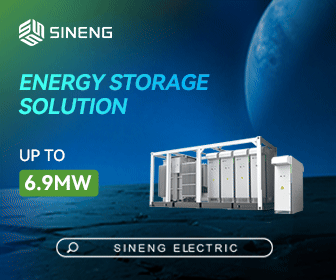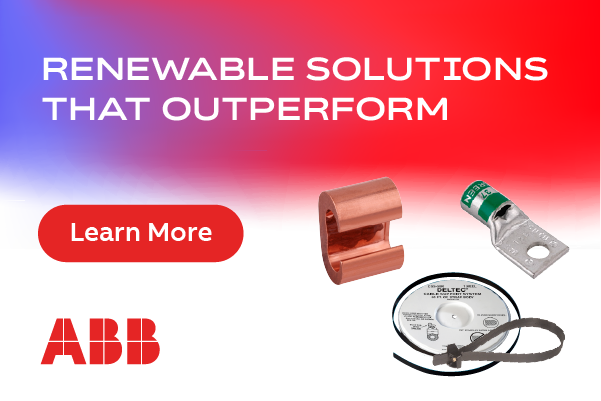Making Microgrids Even Greener
 As we continue to move towards more sustainable sources of energy (to power homes, commercial sites, industrial campuses, and remote locales), microgrids are gaining traction. Of special note are the recent weather-related disasters that have knocked out the power grid for days, prompting utilities to seriously look at how microgrids might be used to provide backup power to homes and emergency services. The recent weather catastrophe in Texas is a good example of how distributed power systems could be used to enhance overall reliability. In a recent news announcement, Pacific Gas & Electric (PG&E), the utility provider in Northern California, stated that it is defining microgrid proposals. These proposals are designed to reduce the number of customers affected by Public Safety Power Shutoff (PSPS) events and mitigate the impacts to those who remain affected. A PSPS may be used whenever severe weather threatens a portion of the electric system and PG&E determines it is necessary to turn off electricity - to reduce the risk of a catastrophic wildfire.
As we continue to move towards more sustainable sources of energy (to power homes, commercial sites, industrial campuses, and remote locales), microgrids are gaining traction. Of special note are the recent weather-related disasters that have knocked out the power grid for days, prompting utilities to seriously look at how microgrids might be used to provide backup power to homes and emergency services. The recent weather catastrophe in Texas is a good example of how distributed power systems could be used to enhance overall reliability. In a recent news announcement, Pacific Gas & Electric (PG&E), the utility provider in Northern California, stated that it is defining microgrid proposals. These proposals are designed to reduce the number of customers affected by Public Safety Power Shutoff (PSPS) events and mitigate the impacts to those who remain affected. A PSPS may be used whenever severe weather threatens a portion of the electric system and PG&E determines it is necessary to turn off electricity - to reduce the risk of a catastrophic wildfire.
Nearly 20 GW of capacity is now managed on microgrids. While major utilities account for 40 percent of new capacity, remote microgrids contribute a massive 34 percent.
Microgrids provide a variety of important benefits, including cost reduction and a smaller environmental footprint, while facilitating the use of renewable energy resources like wind and solar. However, the majority of microgrids use internal combustion engines, like diesel generators, to supplement the renewable sources during times of limited sun exposure or wind generation and to handle peak load situations. Combustion engines burn diesel fuel to produce power and are kept running as "spinning reserves" to the renewable plant. This increases fuel consumption cost and generates greenhouse gases - the very thing we're trying to mitigate. This is why energy storage is vital for the successful integration of renewable sources.

While lithium-ion batteries are replacing lead-acid batteries, their thermal runaway issues and fire risks are not optimum. Due to their advantages in microgrid support, flywheels are gaining a larger share of the energy storage market.
Flywheel Benefits:
· High reliability and availability
· Fast and simple installation and commissioning (can be done by operator)
· Modular designs allow increased storage capacity as needs grow
· Can be programmed for energy storage, payback, voltage sags, or to perform as a substation
How flywheels work
 A flywheel system operates like a dynamic battery that stores energy kinetically by spinning a mass around an axis (Figure 2). Electrical input spins the flywheel rotor up to speed, and a standby charge keeps it constantly spinning until it is called upon to release the stored energy. The amount of energy available and its duration is proportional to its mass and the square of its revolution speed. For flywheels, doubling mass doubles energy capacity, but doubling rotational speed quadruples energy capacity.
A flywheel system operates like a dynamic battery that stores energy kinetically by spinning a mass around an axis (Figure 2). Electrical input spins the flywheel rotor up to speed, and a standby charge keeps it constantly spinning until it is called upon to release the stored energy. The amount of energy available and its duration is proportional to its mass and the square of its revolution speed. For flywheels, doubling mass doubles energy capacity, but doubling rotational speed quadruples energy capacity.
Modern flywheel systems store kinetic energy in the form of a rotating mass; they are designed for high power, short discharge applications. A high-speed motor generator and active magnetic bearings are used to levitate and sustain the rotor during operation. A control and monitoring system can provide real-time information on system performance. These innovative technologies enable the flywheel systems to charge and discharge at very high rates for countless cycles, making conventional technologies like batteries obsolete.
When compared to chemical batteries, flywheels offer:
- Fast Response - they can promptly store huge bursts of energy;
· Efficiency - charges/discharges are made with very small losses; used as an electrical storage system, a flywheel can have efficiencies over 97 percent;
· Maintenance - flywheels are not temperature sensitive, nor do they pose the chemical recycling/maintenance issues of conventional batteries;
· Lifespan - flywheels have a typical lifespan of about 20 years, while a lead-acid battery needs to be replaced every three to seven years (even sooner for high cycle applications);
· Flywheels are capable of millions of full charge and discharge cycles over the life of the system with no degradation in voltage, power, or storage - unlike batteries. Flywheel technology has no emissions and is considered the only green technology of the storage technologies.
Based on the specific application requirements, high-performance flywheel energy recycling systems provide backup power as well as power conditioning. The flywheel will absorb fluctuations in microgrid power (Figure 3) and protect sensitive electronics and appliances from premature failure due to poor power quality. Moreover, working in conjunction with generators, these energy storage systems can be configured to accommodate sudden peak demands. This allows operators to minimize the use of diesel gensets, either running fewer systems or running existing systems for less time. The result not only saves money and the environment, but can also enhance reliability.
John Jeter is the Director of Sales for VYCON, a manufacturer of technologically advanced flywheel energy storage systems for a variety of applications.
VYCON, Inc. | vyconenergy.com
Author: John Jeter
Volume: 2021 July/August









